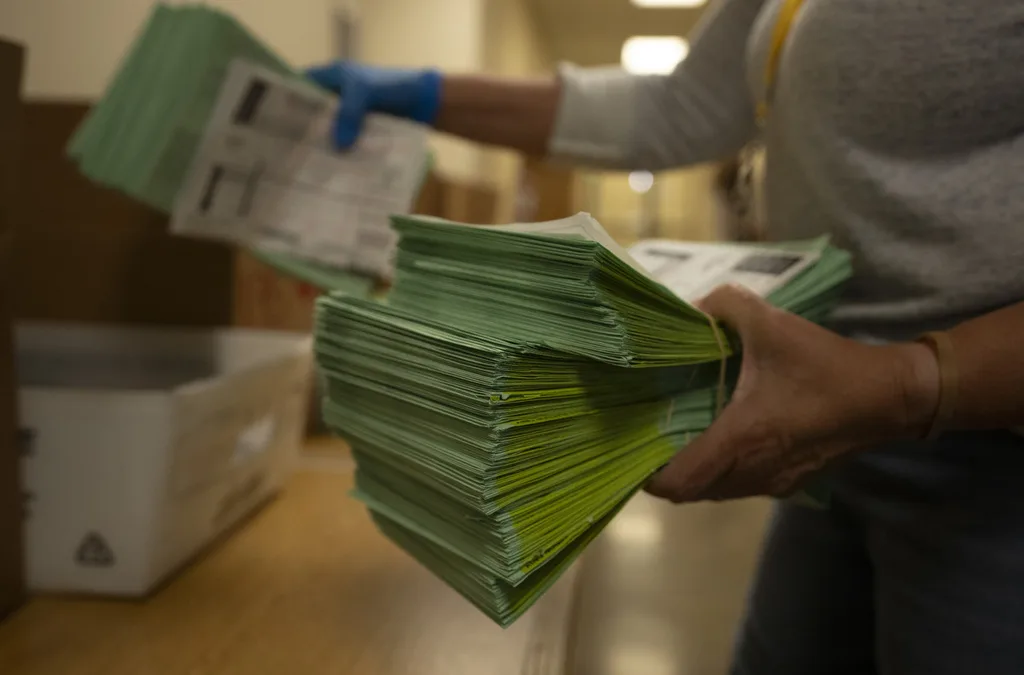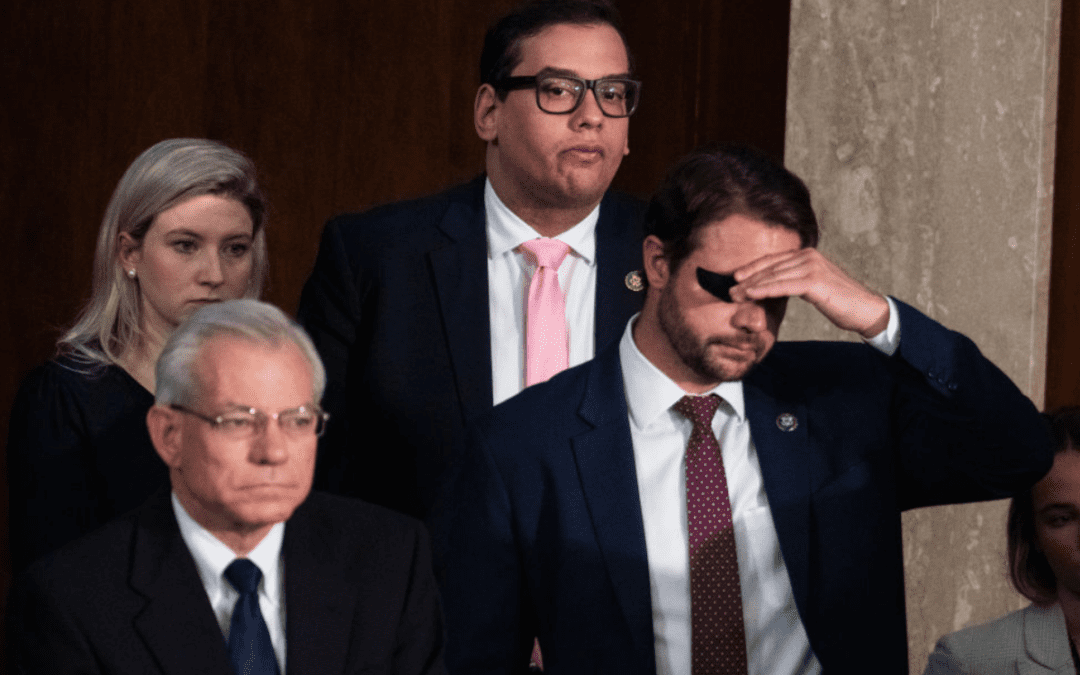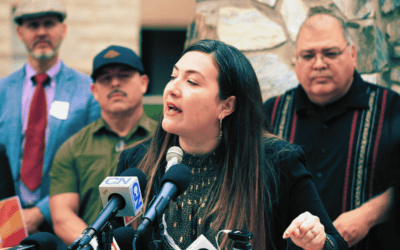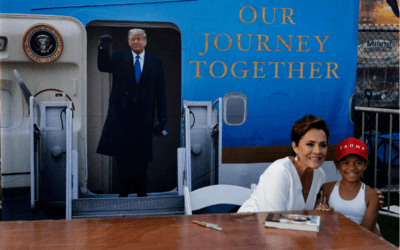Seven months after recreational marijuana sales first kicked off, things have changed for Arizona dispensaries.
In November 2020, Arizona voters passed Proposition 207, which legalized cannabis sales for adult use.
With dispensaries closing in on $1 billion in sales for its first year, we spoke with Greta Brandt, president of The Flower Shop AZ, which operates three dispensaries across the Valley, to get the inside track on what the industry looks like today.
“You are seeing this huge evolution in the industry, which is wonderful,” Brandt told us during a recent Instagram Live. “I’m sure if you asked me in five years, [dispensaries are] gonna feel like a Nordstrom’s. That’s where this is going. You’d feel like you’d be going into a CVS.”
Watch the full conversation above, or check out some highlights below.
Note: This interview has been edited for length and clarity.
The Copper Courier: The cannabis industry has gone through a lot of changes over the last year. What stood out to you about The Flower Shop and working in this industry in general?
Greta Brandt: Well, this industry is evolving every day. So it is a very exciting industry to be in, whether you’re a lawyer, a business owner, a cultivator, an extraction artist, or a budtender at the stores. But the industry has its challenges. There’s no question. We aren’t necessarily afforded the same opportunities from a business standpoint due to the federal illegality. So it does create some challenges. We are highly regulated, not only from the state. It is a very unique industry to be involved in.
CC: I would love to hear from your perspective about what the last six months in particular have looked like for you guys. What kinds of challenges have you faced with the rollout of recreational sales? Did it meet your expectations?
We’ve been preparing for recreation since the fall of 2020. We’ve been preparing, from an inventory standpoint, for the increased demand and foot traffic we would be seeing. Here in Arizona, we were one of the first dispensaries to go live for adult use. So as soon as we received notice that we were approved for the dual license, which allowed us to sell to adult-use consumers, we immediately flipped the switch and started that. We saw over 1,000 customers a day at all three locations. Just from medical to recreational, you’re seeing three times the sales in an adult-use market today. We had anticipated that for sure. You’re kind of flying blind. You look at the other states to kind of see what challenges that they had, whether we could adopt some of those resolutions that they’ve identified before we obviously went rec, but a lot of the time, you just don’t know until you know.
RELATED: Blaze On: Recreational Marijuana Is Officially Legal in Arizona
In the first few months, you did see the novelty of adult use, which is super exciting. So people really didn’t understand what a dispensary was, how it operated, what products are sitting on our shelves. They may have heard about it from a friend of a friend, but now they were able to actually go through the doors and see behind the scenes, what it looked like from a dispensary. I think it created that surge that you saw in February, March, and April. You also had 420, the national holiday, which also created that surge of sales as well.
So for at least for the first four months it was very, very busy. Product was selling out very quickly. Vendors were quickly scrambling to keep up with the demand. Now, things have evened out over the summer, and supply is not a problem. Demand is there, and supply is meeting that demand. So looking back six months at recreational sales, I would say that, yes, it definitely hit our expectations.
CC: Can you talk a little bit about the difference between medical marijuana cardholders and recreational users, and any reconfiguring you guys are doing in relation to your inventory depending on the clientele that are coming into your dispensaries now?
We operate two programs: medical programs, plus a recreational program, but our inventory comes in as for both. Adult use allows up to an ounce a transaction for them to purchase. But they have a restriction for edibles, where on the medical side, they don’t have any restrictions on potency. … Our medical program still outpaces our rec program. There’s definitely advantages to being a cardholder here in this state. Both pay sales tax, but rec pays an additional excise tax of 16%. So there’s a benefit there. On the medical side, they don’t have the restrictions for edibles, so you could purchase a 900 milligram bag of edibles, you could purchase a 300 milligram bag of edibles, or you could purchase a brownie that has 200 milligrams. There is a benefit of having a medical card, from cost savings, and then also having no restrictions on your product offerings.
CC: Could you talk a little bit more about why that is, and why recreational buyers are not able to purchase the same kind of products or products with the same kind of potency?
GB: Medical patients have obtained a medical card based upon a qualifying condition. So they have some type of medical condition that is allowing them to have unlimited potency restrictions. That was established back in 2012 when the program was launched. Once we started getting into the discussion of bringing in recreational sales here to the state of Arizona, during the first initial unsuccessful ballot initiative, one of the bigger concerns was edibles specifically for children and the attractiveness to children. They have restrictions about shapes, that they couldn’t be in the form of animals, insects, anything that would be attractive to children. [On the medical side] you can have gummy bears in the 300 milligram package, but you could not purchase that under the rec program. That is all based upon the protection of children and avoiding the attractiveness for children. It was a way to suffice some of the opposition for Prop 207.
CC: You talked about the 16% excise tax that is levied against recreational marijuana sales, but not for medical marijuana sales. Why does that tax exist and where is that money going in Arizona?
GB: There [are] similar tax schemes across the country that have a recreational program. It goes into buckets. A majority of these have to deal with public safety, infrastructure. A lot of it goes to police and fire. The state then uses it for those specific uses outlined in Prop 207.
I think we’re on track to hitting over $1 billion for marijuana here in the state of Arizona, which is very impressive for the first year. It took five years for Colorado to collect that.
CC: What do you think that says about how views toward recreational marijuana have changed in the state?
GB: The state of Arizona has warmed up to recreational sales. There’s no question about it. And we’ve had four years … since the previous failed initiative. The margin was so slim that first time. I think it was about 3% that we lost. So we knew we had the support, and it was really trying to change the perception of even 10% of those who opposed it. With that came education, with that came operators becoming more professional.
RELATED: Here’s How to Expunge That Pesky Marijuana Offense From Your Record
It was a black market 10 years ago. They’ve evolved since then. It’s a corporate environment now. It’s a normal business we’re running. We’ve got employees, we pay taxes. We offer benefits. People now are not opposed to understanding it a little bit more, or at least are open-minded to hearing about the benefits and how the success stories have helped people. Because we hear those every day. We hear about how medical marijuana has changed people’s lives in one way or another.
CC: A lot of people assume that dispensaries are going to be located in more industrial areas of the city, someplace that is maybe not as easily accessible. I would love to hear about how you guys have approached that changing idea of what dispensaries can be in the community and look like to the community.
GB: That’s what’s so exciting. You are seeing operators wanting to get out of this stereotypical stoner vibe. This is a health and wellness company where we are offering marijuana. These operators are now trying to move away from the stereotype. You’re trying to now attract your mother, your father, your grandmother, your grandfather, your aunt, your uncle, to come inside and feel comfortable enough that they don’t feel overwhelmed or intimidated to come into a dispensary. We want to make it feel like anybody can walk in. There’s only a limited number of stores here in Arizona. It’s our job to attract and be able to make all customers and patients feel comfortable when they come in. A lot of them don’t have the experience with marijuana. They’re coming in to learn more about it, get a better understanding. You are seeing this huge evolution in the industry, which is wonderful. I’m sure if you asked me in five years, it’s gonna feel like a Nordstrom’s. That’s where this is going. You’d feel like you’d be going into a CVS.
Looking for the latest Arizona news? Sign up for our FREE daily newsletter.

He said what? 10 things to know about RFK Jr.
The Kennedy family has long been considered “Democratic royalty.” But Robert F. Kennedy, Jr.—son of Robert F. Kennedy, who was assassinated while...

Here’s everything you need to know about this month’s Mercury retrograde
Does everything in your life feel a little more chaotic than usual? Or do you feel like misunderstandings are cropping up more frequently than they...

Arizona expects to be back at the center of election attacks. Its officials are going on offense
Republican Richer and Democrat Fontes are taking more aggressive steps than ever to rebuild trust with voters, knock down disinformation, and...

George Santos’ former treasurer running attack ads in Arizona with Dem-sounding PAC name
An unregistered, Republican-run political action committee from Texas with a deceptively Democratic name and ties to disgraced US Rep. George Santos...




